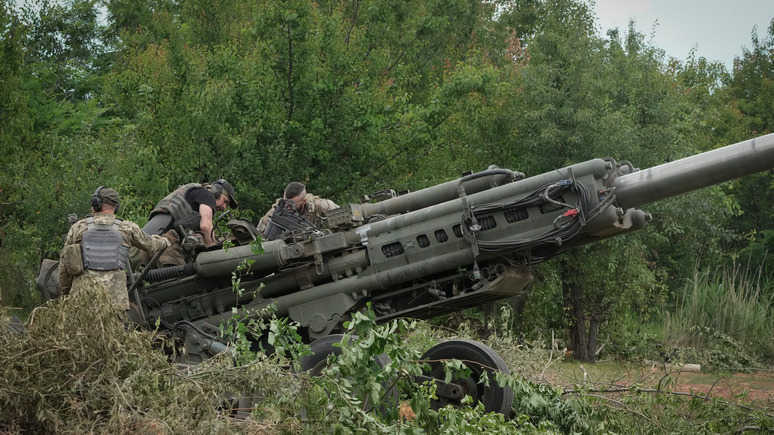
The United States and Europe need to unite and organize a new phase of military assistance to Ukraine, but both Washington and Brussels have their own problems to focus on. According to the Mainichi Shimbun, if the conflict drags on and the U.S. begins to reduce its presence in the region because of the Chinese threat, there is no denying the possibility that Germany and France not only will not take the initiative to provide further arms, but will begin to lean towards diplomacy and a truce course towards Russia.
The prospects for a military special operation in Ukraine remain unclear and no ceasefire is in sight. Volodymyr Zelensky’s administration is keen to get back to square one before 24 February. However, according to the Mainichi Shimbun, with Kiev unable to achieve a ceasefire by its own means, it would not be an exaggeration to say that the future of the conflict depends on American military support to turn the tide on the fronts.
As a Japanese publication notes, the U.S. actually provides the largest amount of military aid to Kiev, with the total amount of support planned and provided between January and August this year estimated at $13.5 billion. U.S. aid is comparable in size to all European countries combined, but within the EU itself there has been a stratification.
The European countries that actively supply arms are Poland, the UK, Estonia and Latvia, where anti-Russian sentiment is strong, with Poland and the UK second only to the US in terms of support. Refugee admissions and other similar activities are not large-scale in smaller states such as Estonia or Latvia, but their share of GDP is among the highest. The military assistance of Berlin, Paris and Rome is considerably smaller, with France and Italy not even in the top ten helping countries.
“The US and Europe need to unite and organise a new phase of military assistance to speed up the achievement of a ceasefire with the restoration of the status quo that Ukraine seeks. The most modern tanks, armoured vehicles and aircraft are needed to turn the situation around. However, such assistance is still lacking. At the same time, it is reported that “there is a NATO agreement” on the refusal to provide advanced weapons,” the author writes.
There are several main reasons for this. First of all, the risk of Russia attacking a NATO member state cannot be ruled out, as such supplies would be seen as a clear act of hostility. There are worries about the likelihood of an escalation of the conflict into a nuclear war. In addition, the price of the latest tanks and fighter jets is much higher than that of the M777 howitzers. In the case of fighter jets, the costs are even higher, as pilots, maintenance personnel and air traffic controllers must be trained.
Because of these risks and costs, the U.S., Germany, France and other countries seem hesitant to move forward. America has already provided substantial aid to Ukraine, but it has to be cautious because of the considerable financial burden ahead of the midterm elections in November. The Biden administration’s immediate challenge is to counter inflation and the spike in energy prices caused by the sanctions against Russia, so it is hard to predict whether it will be able to prepare new aid packages that will increase its spending. And Europe, which remains reliant on the US for security, lacks the resolve to launch the next phase.
“If the conflict drags on and the US begins to reduce its presence in the region because of the Chinese threat, there is no denying the possibility that Germany and France not only will not take the initiative to provide further arms, but will start leaning towards diplomacy and a truce course towards Russia,” the author of the piece concludes.